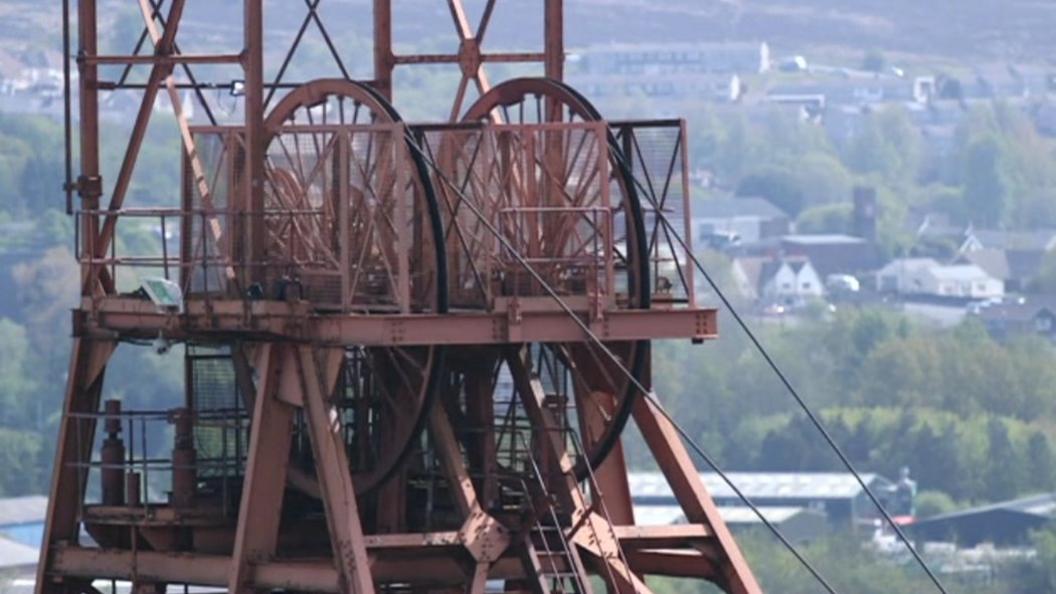Old coal mines can be 'perfect' underground food farms
- Published

Experts say former mine shafts could be used to grow food
Abandoned coal mines across the UK could be brought back to life as huge underground farms, according to academics.
Mine shafts and tunnels are seen as "the perfect environment" for growing food such as vegetables and herbs.
The initiative is seen as a way of providing large-scale crop production for a growing global population.
Advocates say subterranean farms could yield up to ten times as much as farms above ground.
President of the World Society of Sustainable Energy Technology, Prof Saffa Riffat, believes the scheme would be a cost-effective way of meeting the growing need for food.
It could also breathe new life into many mines that have been closed since the decline of the UK coal industry in the late 1980s and offer a cheaper alternative to vertical farming in giant greenhouses.
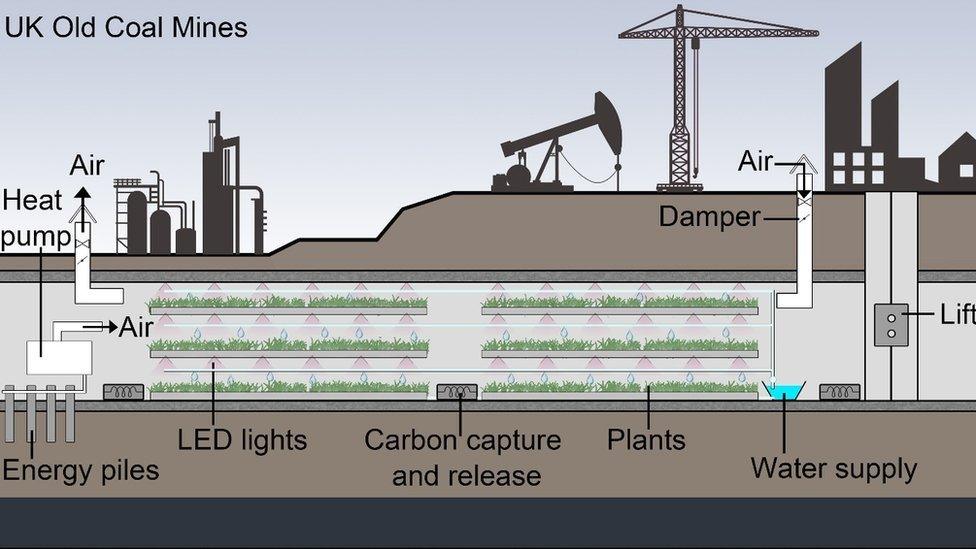
How it would work
The idea has already gained support from mine owners, including the Land Trust and Coal Authority, while the Chinese government has also expressed an interest.
There are an estimated 150,000 abandoned shafts and 25,000km-sq of disused mines and tunnels in the UK.
"I'm very excited about the enormous potential. Rather than import so much food by air, rail and sea, we could grow a lot of it here and in huge quantities," said Prof Riffat.
"I wish I had thought of this idea when they were making all the miners redundant. We may have been able to offer them an alternative job."
So what are underground farms, and how would they work?
A problem solved?
By all predictions, global population will continue to grow with the figure in the UK set to reach 80 million before the end of the century, according to the United Nations, external.
Increasingly, people are opting to live in cities rather than rural areas, putting a strain on food production and land space.
"We have a major issue with food production and supply with the world's population expected to reach nine billion by 2050," said Prof Riffat, of University of Nottingham.
"We need to do this for our future. We have a growing demand for food, especially in the cities, but less space to grow it."
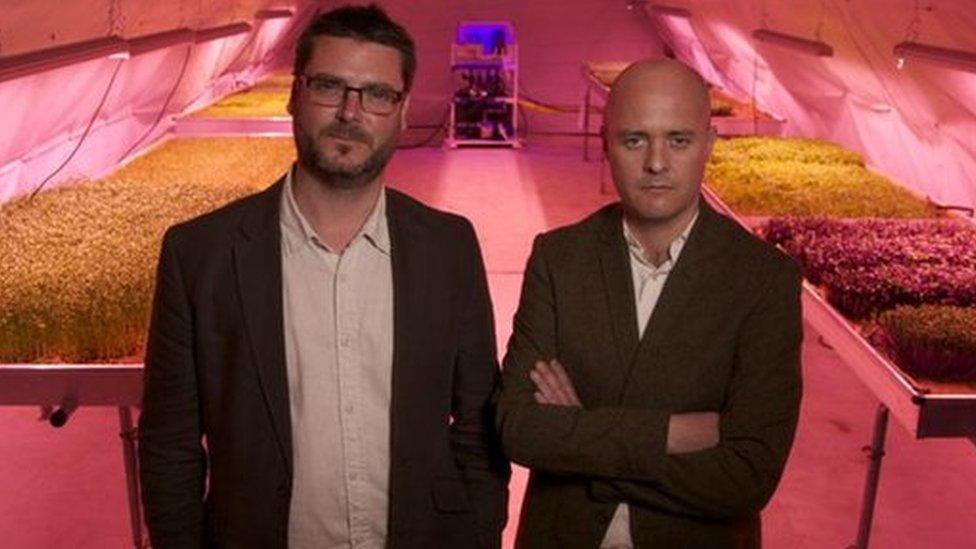
Richard Ballard (left) and Steven Dring grow food in a former air-raid tunnel in London
Why tunnels?
A former World War Two air-raid shelter 100ft (30.5m) under Clapham Common, London, is already being used to grow greens for local supermarkets and restaurants.
Unlike current agriculture, farming underground is unaffected by irregular seasons, climate change and the extreme weather witnessed throughout 2018.
Almost all the ingredients needed for growing crops such as lettuces, carrots, mushrooms and strawberries are already in place.
The air temperature and humidity levels are generally temperate and constant while there is a ready water supply as well as carbon dioxide.
"Tunnels and shafts would need less energy with heating, so are very attractive for food production. They're almost perfect," said Prof Riffat.
Allow X content?
This article contains content provided by X. We ask for your permission before anything is loaded, as they may be using cookies and other technologies. You may want to read X’s cookie policy, external and privacy policy, external before accepting. To view this content choose ‘accept and continue’.
How would it work?
Crops would either be grown in water or suspended in the air and sprayed with water and nutrients.
Lighting would either be from LED lights which are now "extremely cheap to buy and run" or fibre-optic technology which can tunnel sunlight up to 40 metres into the ground.
Carbon-capture technology would capitalise on the naturally occurring CO2.

Is it viable?
Currently, mass-producing crops requires large areas of land.
However one 7m-sq shaft can produce 80 tonnes of food per year, according to Prof Riffat, approximately eight to 10 times the amount of food grown on the same area of land above ground.
"You're looking at about £30,000 to set up one shaft and the running costs are very low - less than the energy consumed by three houses each year. With natural sunlight, the costs are even less."
What has been the reaction?
The Land Trust owns and manages many former colliery sites that have been converted into public spaces.
"It's a great idea and one that we have previously considered ourselves," said chief executive Euan Hall.
"There are obvious challenges, not least that many shafts have been capped or have been built on, but there are lots of coalfields where there's no community around them, where this is clearly something worth looking at.
"A lot of hill farmers in Wales are living hand to mouth so anything that helps diversity and brings a new form of income would be very welcome."
A spokesperson for the Coal Authority said it was "open to considering new ideas" as part of its innovation strategy.
He added: "As an organisation, we constantly review new ways to develop our mining legacy in an effort to minimise remediation costs, generate income from by products and create a future for these important and unique areas.
"Any schemes involving former coal mines would inevitably throw up many technical, legal and financial challenges that would need to be overcome."
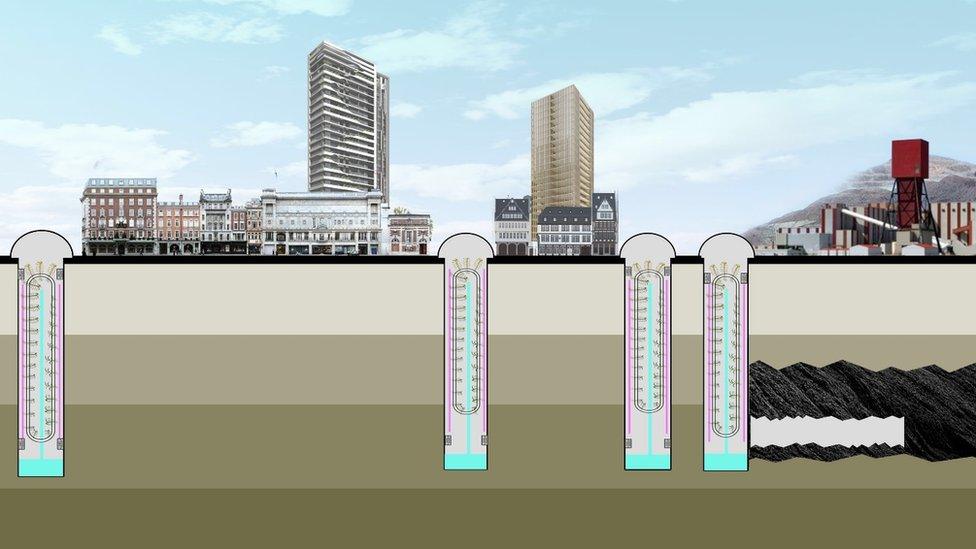
Shafts close to cities to provide a steady supply of fresh food.
- Published15 June 2018

- Published30 January 2014

- Published26 March 2015

- Published2 May 2018
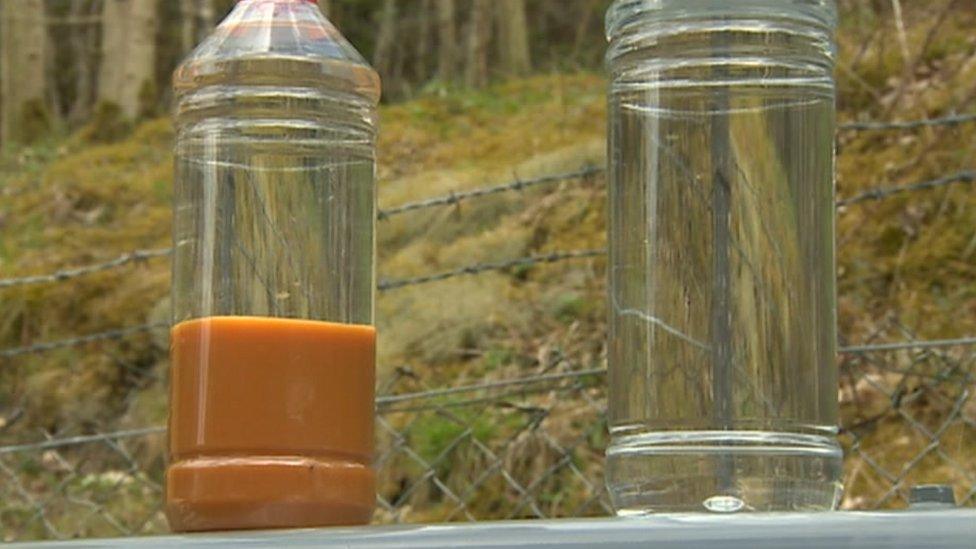
- Published30 March 2017
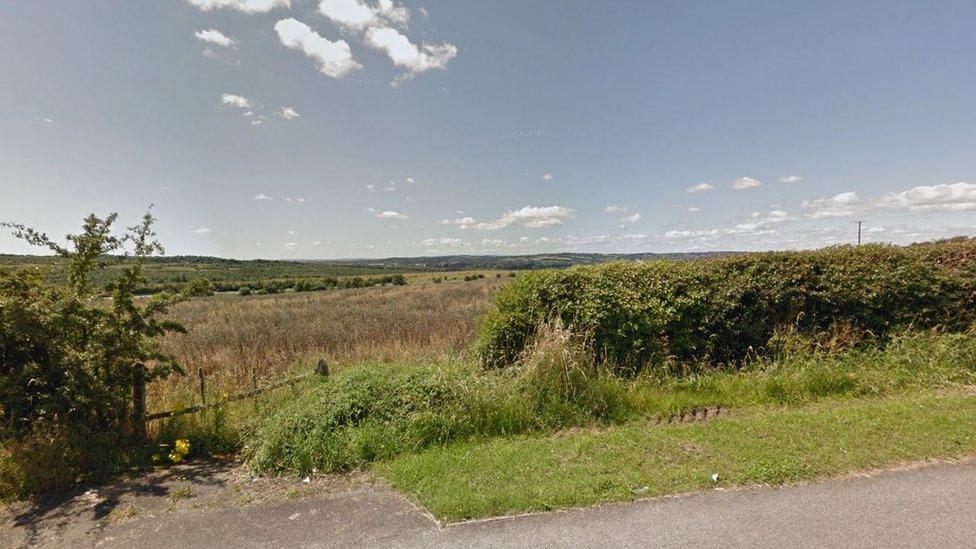
- Published21 May 2017
